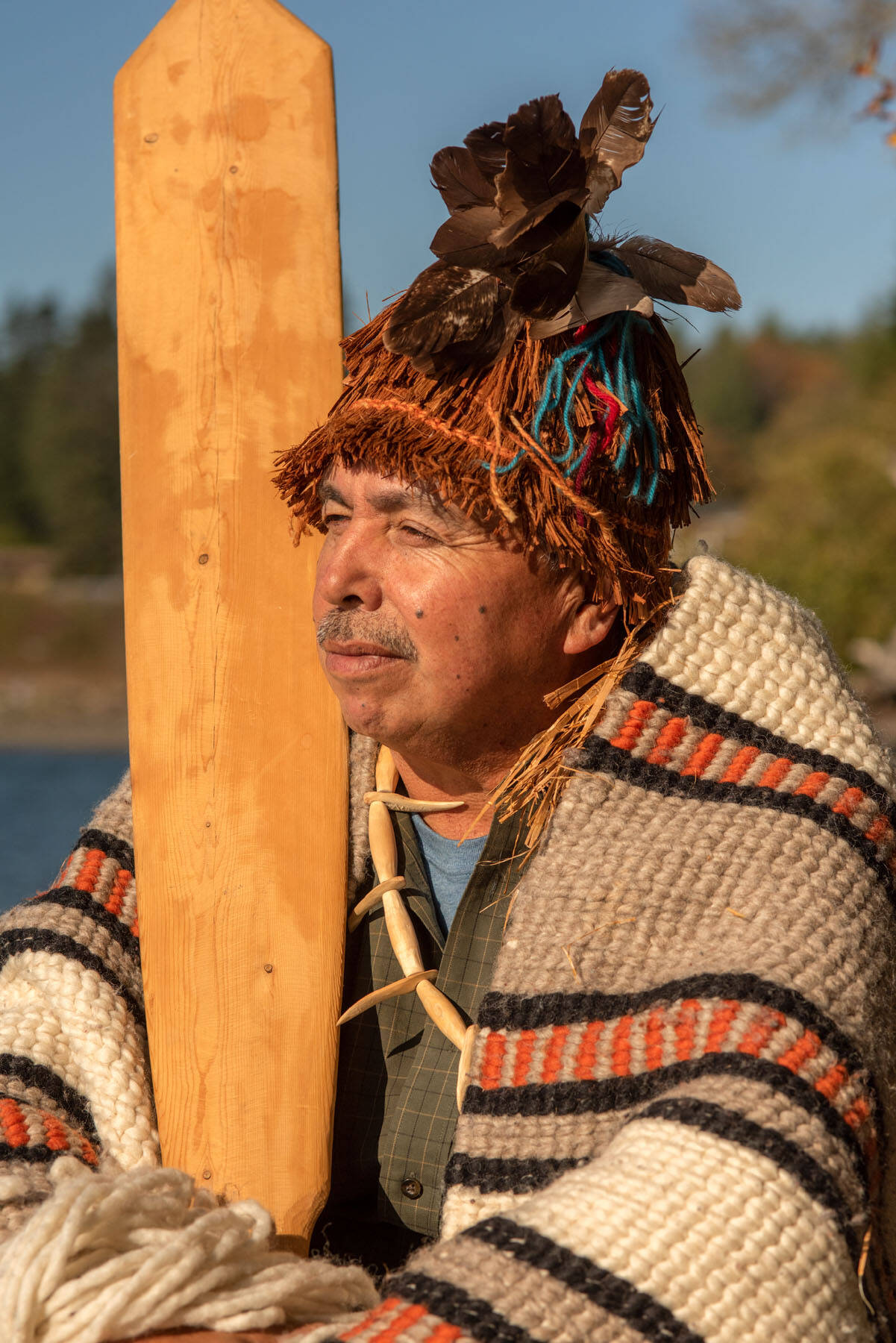Submitted by the Lopez Historical Society and Museum.
Lopez resident Jack Giard started reef net fishing for salmon when he was just 18. Now 82, his reef net gear off the west shore of Lopez Island is the longest continuously running operation in the Salish Sea.
Lummi Fisherman Troy Olsen, 62, is twenty years younger than Giard, but his memories of reef net traditions stretch back generations when knowledge of the best locations to catch migrating salmon, set the nets, read the currents, and haul in the fish were passed down through family lines.
On October 1, Olsen and Giard will talk about the history and future of reef net fishing as part of the Living Traditions Series sponsored by the Lopez Historical Society and Museum. The talk will be at 7:30 p.m. at the Lopez Community Center.
The talk was originally scheduled for May but was rescheduled because of rising COVID cases.
Reef net fishing is an ancient method practiced by indigenous Strait Salish peoples for millenia, with nets strung between two canoes with tall, distinctive spotting stands where a lookout alerts the crew below to the approaching salmon and the moment when the nets should be hauled in.
“You have to see them with your eyes,” said Giard. “You’re not chasing after them in a gillnetter or purse seiner burning up expensive fuel.” But fishing from a fixed location also has its risks. “It’s always a bit of a gamble that the fish will come to you.”
Olsen said the Salish Straits tribal fisherman traditionally used cedar canoes, woven willow nets and anchor rocks to catch the large schools of salmon on their annual migration. The gear, permanently anchored on points around the San Juans and north Puget Sound, as well as knowledge of the tides, weather and migration patterns, were passed down among families for generations.
“Everything, the tides, the weather, the location, all have to be working,” Olsen said.
Olsen said his grandfather started reef net fishing as a boy of 12 on San Juan Island and later gave a deposition as part of the Boldt decision which affirmed native treaty rights for Washington tribal members to fish in their usual and accustomed places. The historic locations of native reef net gear operated by Lummi and other Northwest tribal fishermen was specifically mentioned in the decision, Olsen said.
Olsen said the tribes have had to wage a “long historical battle” to protect and enforce their treaty right to fish. In the early decades of the 1900s, he said, tribal fishermen, including his grandfather, had their reef nets slashed and faced cannery operators who refused to buy native-caught salmon.
Today, he said, the revival of reef net fishing is an important part of the tribes’ efforts to help their members reconnect with their traditional practices and culture. Olsen has worked with his own tribe and the Canadian Saanich tribe to introduce their youth to the experience of reef net fishing.
“I want future generations to have the opportunity to put their hands on a reef net, to know what it’s like to catch a live salmon in prime condition,” Olsen said.
Giard, who himself learned reef netting at a time when many tribal members still operated reef net gear in the San Juans, has over the past several years shared his knowledge with Saanich and Lummi fishermen seeking to revive the ancient practice.
“We’re here to help,” he said.
While modern reef net operations employ mechanical winches to help pull in the nets and underwater cameras to locate approaching fish, Olsen said he shares Giard’s passion for the purity of the ancient method.
“Pretty much everyone who has ever reef netted falls in love with it because it’s such a beautiful way of fishing,” Olsen said.




